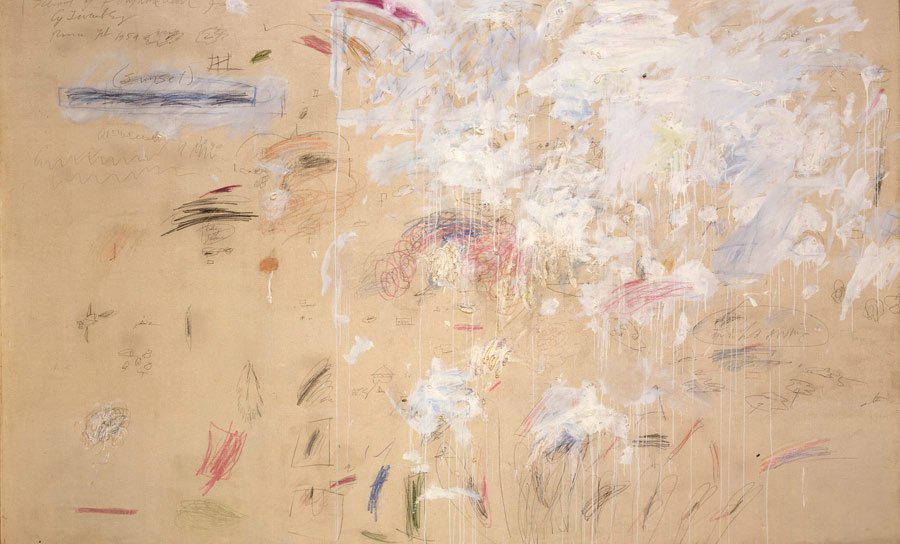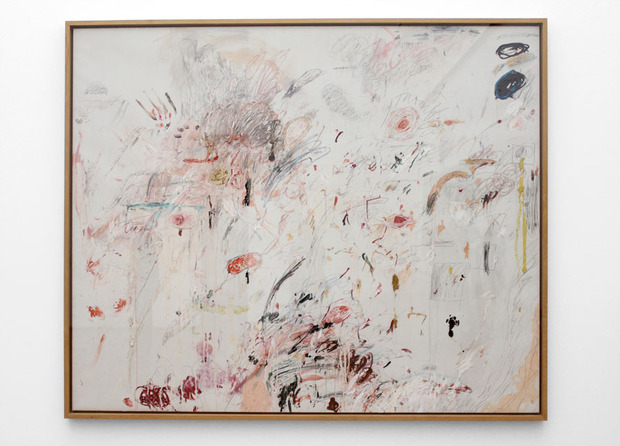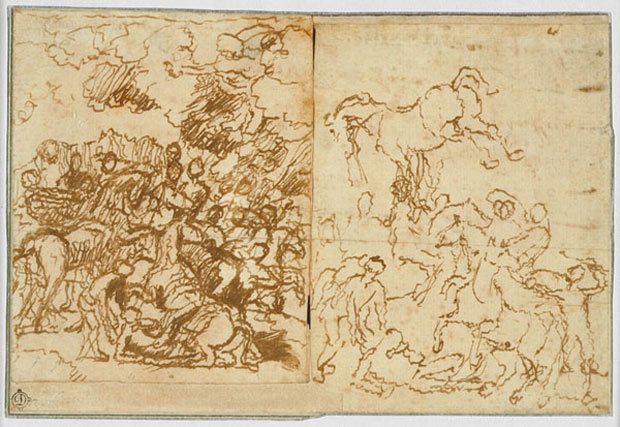Cy Twombly & The School of Fontainebleau
An unlikely exhibition pits the New York School rebel against Renaissance Masters


It’s hard to imagine that Cy Twombly, with his canvases composed of angry scratch marks and messy swathes of paint, would have been influenced by 16th-century French painting. But the Hamburger Bahnhof, Berlin’s leading modern art museum, proposes just that in its exhibition “Cy Twombly & The School of Fontainebleau“. The School of Fontainebleau was a Mannerist decorative style led, oddly enough, by two Italian artists Rosso Fiorentino (1494-1540) and Francesco Primaticcio (1504-1570), who were commissioned to decorate the Palace of Fontainebleau, built on the edge of a forest 45 miles from Paris for the king’s hunting retreats.
Fiorentino and Primaticcio oversaw everything from the paintings and frescos to tapestries and sculptures, and even used “graphic media to disseminate their programmatic style,” making them not only some of the most renowned artists of the period, but the most media-savvy as well.

Flash forward two and half centuries to Twombly and the New York School of painters. After Twombly left New York and the studio he shared with Robert Rauschenberg (whose works are shown in the same gallery at the Hamburger Bahnhof Museum, along with other prominent figures from the New York School), Twombly moved to Italy where he engaged with European art history in a way he never had before. He was especially moved by Nicolas Poussin (1594-1665), whose style was heavily influenced by Fiorentino and Primaticcio’s graphics. Even though his admiration for the Classical Baroque style seems unlikely, in 2008 Twombly admitted, “I would have liked to have been Poussin, if I’d had a choice, in another time.”

Like Poussin, Twombly often explored myths in his work. “Leda and the Swan” is, of course, about how Zeus transformed himself into a swan in order to come down to earth and rape the mortal Leda, and his “Apollo and The Artist” series is comprised of eight drawings of inscriptions of the word “Virgil”. More specifically, Twombly’s “Empire of Flora” is a direct reference to Poussin’s painting of the same name and explores similar themes of metamorphosis “set in a heroic landscape as an amorous allegory of desire.”

When viewed side by side, you can see elements of Twombly’s pencil work in Poussin’s sketches and studies for larger oil paintings like “The Conversion of St. Paul”. Though it’s not uncommon for modern art museums like the Hamburger Bahnhof to have amassed a collection of modern painters like Twombly, Rauschenberg, Jasper Johns, Roy Lichtenstein and Andy Warhol, it is uncommon to see their work curated in direct relation to centuries-old painting, and by making unique connections curators Eugen Blume and Matilda Felix manage to keep works in heavy rotation as fresh and exciting as they were when Twombly’s controversial scratch marks first shook up the art world.
“Cy Twombly & The School of Fontainebleau” runs through October 2012. Find image credits after the jump.
Hamburger Bahnhof
Invalidenstraße 50-51
10557 Berlin, Germany
Image credits:
Empire of Flora: “Empire of Flora” (1961), by Twombly
School of Fontainebleau: “School of Fontainebleau” (1960), by Twombly
Poussin: a study for “The Conversion of St. Paul” (1657) by Nicolas Poussin
Thyrsis: “Thyrsis” (1977), by Twombly












